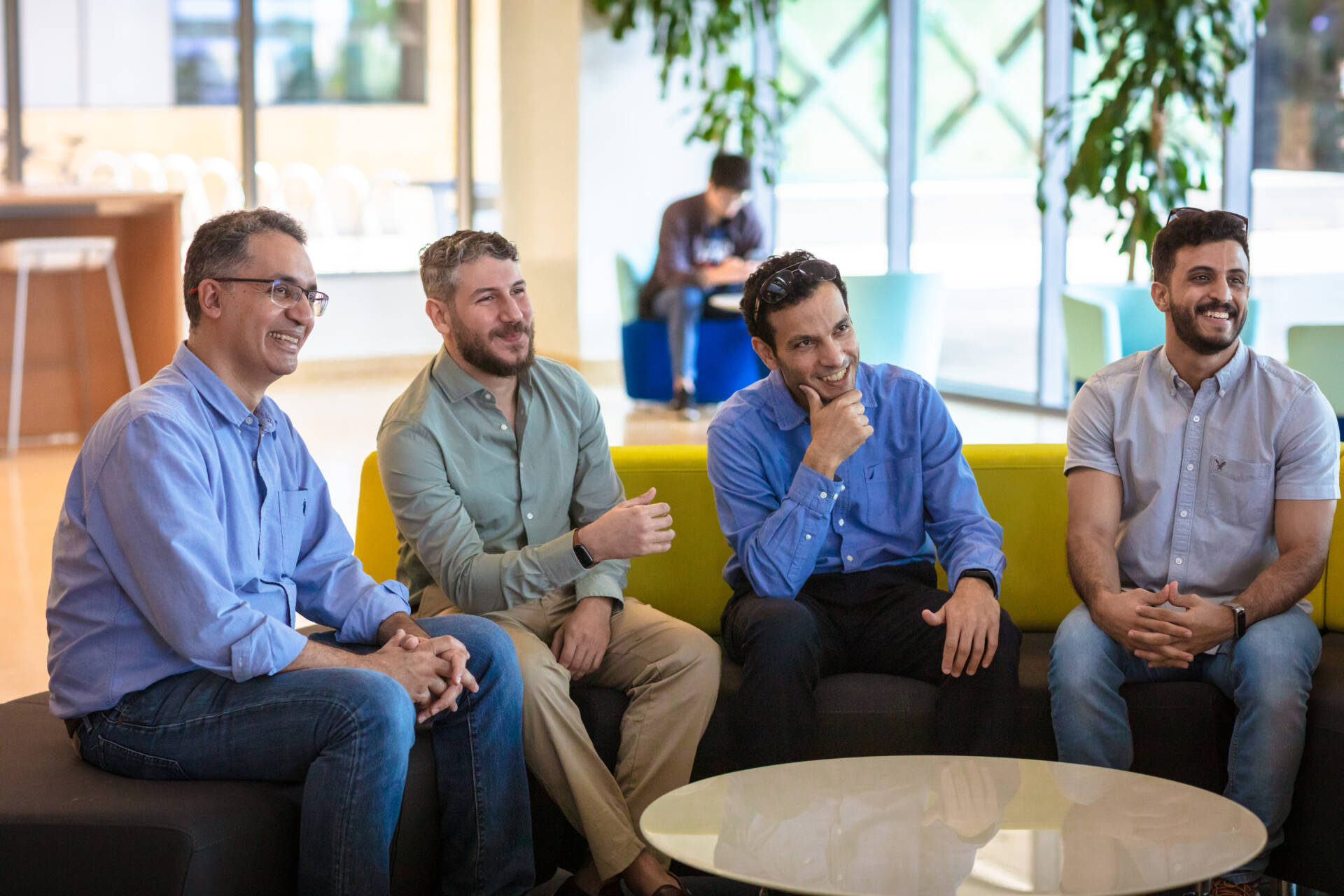Smart headwear that monitors posture could help reduce neck and back pain caused by long periods of sitting at computers and using smartphones.
Studies indicate that people crane their neck at a 45-degree angle when texting on their phone, placing an enormous amount of strain on the spinal ligaments and other muscles. For many office workers, the gradual onset of neck or back pain eventually reminds them to readjust and stretch.
When Ali Muqaibel from King Fahd University of Petroleum & Minerals visited KAUST in 2018, he got chatting with KAUST Faculty Tareq Al-Naffouri about a potential solution – a wearable device for monitoring posture. “The position of the head reveals a lot about a person’s posture,” says Al-Naffouri, “so we started exploring a device that can attach to oqals, the traditional headpieces worn by many Saudi men.”
To advance the idea, Muqaibel and Al-Naffouri were joined by Ahmed Bader, a KAUST research fellow with a track record in commercializing new technologies, as well as some young talents from King Abdullaziz University in nearby Jeddah, who had come to KAUST for an internship.
“When you work in a small team, each new member is a huge investment,” says Bader, who acted as an advisor and mentor. “The three Jeddah graduates showed passion, tenacity and the ability to learn, so they were a great fit for the project.”
The project was awarded KAUST’s Impact Acceleration Grant to get things started. Guided by Bader’s business experience and Al-Naffouri’s electronics expertise, the team transformed what was a large and unattractive device designed only for Saudi men into a tiny tag that can be clipped discreetly on any headwear, such as scarves, glasses or headphones.
“The team were quite attached to their original design, but it was too costly and bulky to take to market,” says Bader. “They had to do a lot of hardcore electronics to shrink it.”
The device has a sensor that monitors the angle and duration of head tilt and sends this data to a mobile app, which uses AI to assess the user’s posture. If it is unhealthy, the app alerts the wearer and provides relevant exercises to help alleviate pain and reduce risk of future injuries.
“The app alerts the wearer and provides relevant exercises to help alleviate pain and reduce the risk of future injuries.”
Mohammed Shukri, who became the team’s technical consultant after his internship in 2020, worked on the posture detection algorithm and the mobile app while learning the details of commercializing a tech product. “As well as helping me tackle the engineering challenges, KAUST’s start-up environment taught me how to navigate funding and reach out to new business prospects,” he says.
For Marya Bamkhramah, being involved in product development from an early stage was a valuable and unique experience. “Working at KAUST allowed me to leave my comfort zone,” she says. “We faced many technical issues in setting up the sensor, but together we’ve always found a solution.” Getting the right components at an affordable price posed further challenges. “KAUST’s support was essential here,” says Safwan Ibrahim, “as the team could access funds and resources that would otherwise have been unavailable.”
Within two years, the young trio were leading the project and in 2021 they launched a start-up called Qawam – an Arabic word signifying a healthy composure – to commercialize their product. The device, designed for office workers, is now in the hands of about 20 “friendly” users who are testing the product and providing feedback. The team hope to launch it in 2022.
This is not the end of Qawam’s journey because there are several other potential markets to explore, such as gamers, drivers and young children who often sit transfixed to a small screen. “We could also venture into rehabilitation and physiotherapy, as well as personalized coaching software,” says Bader, adding “It’s great to see technology being put to good use.”
Despite their input, Bader and Al-Naffouri are not stakeholders in the project. Their return on investment is pride in what these young engineers have achieved so far and what they are poised to accomplish in the future. “This is not just another app,” says Al-Naffouri. “It’s an app with an accessory, and the effort involved in creating a physical product is tremendous.”

